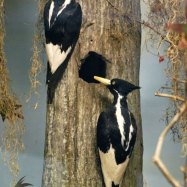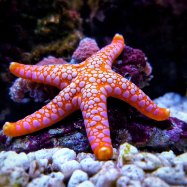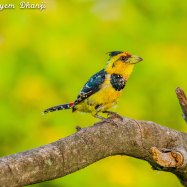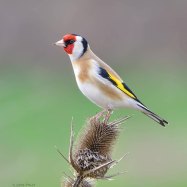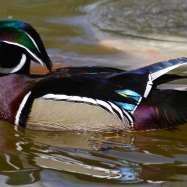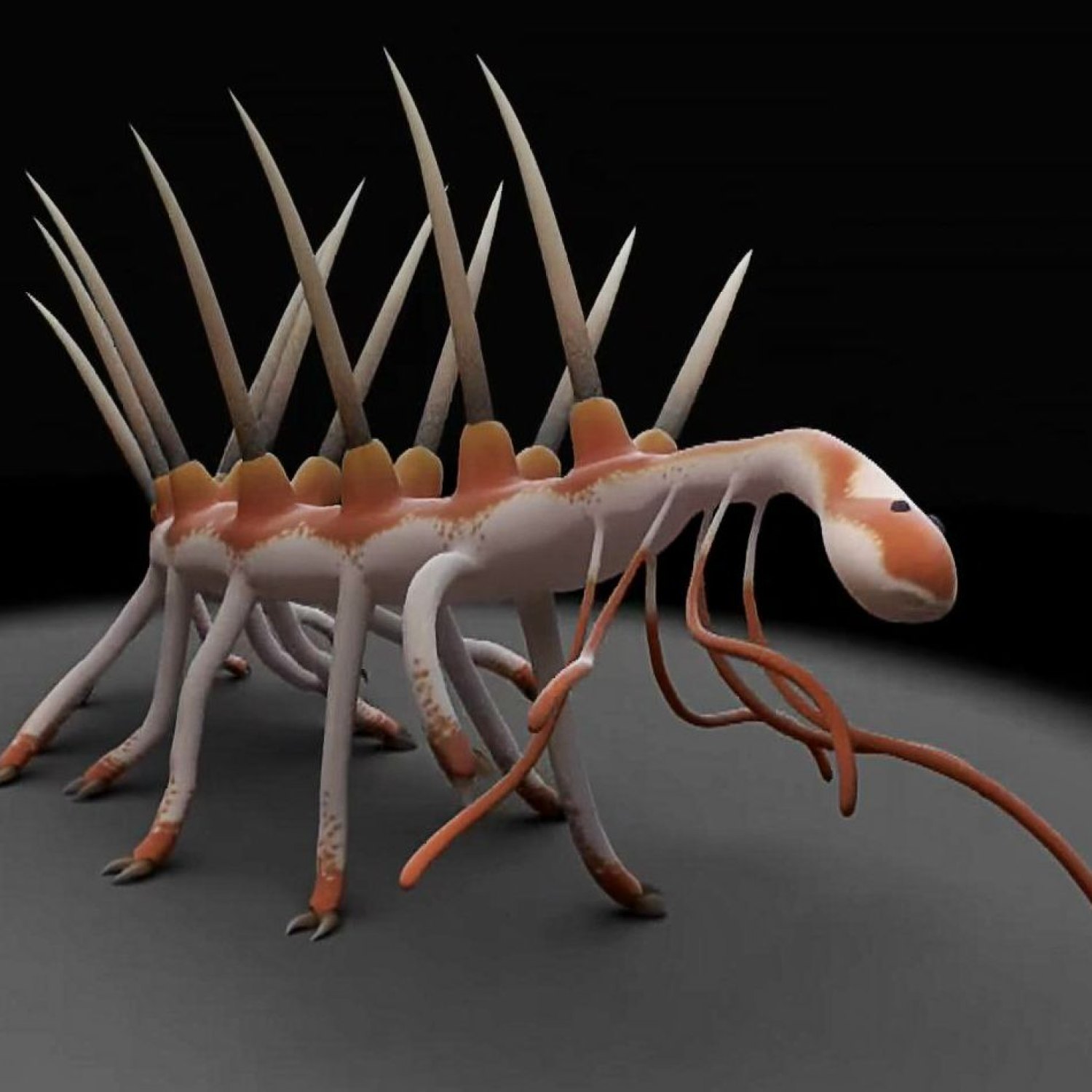
Hallucigenia
5 to 35 millimeters
Discover the fascinating Hallucigenia, a group of animals found in the iconic Burgess Shale. Ranging from 5 to 35mm in length, these slender creatures belong to the family Hallucigeniinae. Their long bodies and unique appearance make them a must-see for any animal enthusiast. Explore the wonders of the Burgess Shale and uncover the mysterious world of Hallucigenia. #Hallucigenia #BurgessShale #animals
Animal Details Summary:
Common Name: Hallucigenia
Kingdom: Animalia
Habitat: Marine
The Mysterious Hallucigenia: An Enigmatic Creature from the Depths of Burgess Shale
In the midst of the Cambrian period, over 500 million years ago, a diverse array of life forms started to emerge in the Earth's ancient oceans. The so-called "Cambrian explosion" marked a turning point in the evolution of animal life, when for the first time, organisms with complex body structures and specialized functions came into existence.Among the fascinating creatures that inhabited the Cambrian seas was a peculiar animal known as Hallucigenia, named after its bizarre appearance. This enigmatic creature has baffled scientists for decades, with its ambiguous classification and strange features that seem like something out of a hallucination Hallucigenia.
A Strange Classification and Mysterious Origins
Hallucigenia, with its scientific name being the same as its common name, belongs to the Kingdom Animalia, just like all other animals. However, when it comes to its specific classification, things become a bit murky.It is classified under the phylum Onychophora, along with velvet worms, and is placed under the class Incertae sedis, which translates to "uncertain placement." This means that its exact evolutionary relationship with other animals is still unknown.
In fact, it wasn't until the 1970s that Hallucigenia was first identified, thanks to the discovery of its fossilized remains in the famous Burgess Shale in Canada. The Burgess Shale is a geological site with an exceptionally well-preserved and diverse collection of fossils from the Cambrian period, making it a paleontologist's dream.
A Unique and Strange Anatomy
One of the most distinctive features of Hallucigenia is its body shape, which is unlike any other creature from its time. It has a long and slender body, measuring between 5 to 35 millimeters in length, with a series of sharp spines running along its back.On its underside, Hallucigenia has seven pairs of long, thin legs, with sharp spines at their tips Harpy Eagle. These legs were not used for walking, but rather for swimming in a crawling motion, as Hallucigenia is thought to have been a marine creature.
But the most baffling aspect of Hallucigenia's anatomy is its head. At first glance, it may seem like it doesn't have a head at all, or that its head is located at the other end of its body. This is because its head is actually inverted, with its mouth and eyes located on its stomach.
This strange arrangement of the head has led to much speculation and debate among scientists about its function and purpose. Some theories suggest that it may have used its spines for defense, while others propose that it could have been a filter-feeder or a predator.
A Carnivorous Feeding Method and Marine Habitat
While its exact feeding habits may still be a mystery, one thing that is known for sure is that Hallucigenia was a carnivorous creature. Its sharp spines and upside-down head seem to indicate that it was a predator, possibly feeding on smaller animals that it captured with its spines or sucked into its strange mouth.As for its habitat, Hallucigenia is believed to have lived in the ancient seas of the Cambrian period. Its fossilized remains were found in the Burgess Shale, which was once a shallow, tropical sea. This suggests that Hallucigenia was highly adapted to a marine environment and may have lived in the sandy or muddy seabed.
A Canadian Native and a Burgess Shale Icon
With its fossils being found only in the Burgess Shale site in Canada, it is safe to say that Hallucigenia is a native of the country. Its uniqueness and strange features have also made it somewhat of an icon for the Burgess Shale, with many illustrations featuring this enigmatic creature.However, its presence in the Burgess Shale is not limited to just fossils. Scientists have also discovered numerous trace fossils, such as burrows and feeding tracks, which are attributed to Hallucigenia. This indicates that they were a common and significant part of the ancient ecosystem.
An Unknown Coloration and a Fascinating Adaptation
While we know much about Hallucigenia's anatomy and habitat, one aspect that still remains a mystery is its coloration. Due to the lack of pigmentation in its fossils, it is difficult to determine its original color. However, some scientists have speculated that it may have been transparent or translucent, allowing its organs to be visible.Regardless of its color, one thing that is certain is that Hallucigenia's unique body structure allowed it to adapt and thrive in its environment. Its upside-down head and spiny legs may have been strange and puzzling to us, but were perfectly suited for its survival in the ancient oceans.
In Conclusion
In a world filled with mind-boggling creatures, Hallucigenia stands out as one of the most peculiar and mysterious animals of all time. Its unknown classification, strange anatomy, and captivating adaptation have intrigued scientists for decades and continue to do so.As we continue to unravel the secrets of the Earth's ancient oceans, we may uncover more about Hallucigenia and its role in the Cambrian ecosystem. But for now, this enigmatic creature remains a fascinating and enigmatic symbol of the diversity of life on our planet.

Hallucigenia
Animal Details Hallucigenia - Scientific Name: Hallucigenia
- Category: Animals H
- Scientific Name: Hallucigenia
- Common Name: Hallucigenia
- Kingdom: Animalia
- Phylum: Onychophora
- Class: Incertae sedis
- Order: Hallucigeniidae
- Family: Hallucigeniinae
- Habitat: Marine
- Feeding Method: Carnivorous
- Geographical Distribution: Burgess Shale, Canada
- Country of Origin: Canada
- Location: Burgess Shale
- Animal Coloration: Unknown
- Body Shape: Long and slender
- Length: 5 to 35 millimeters
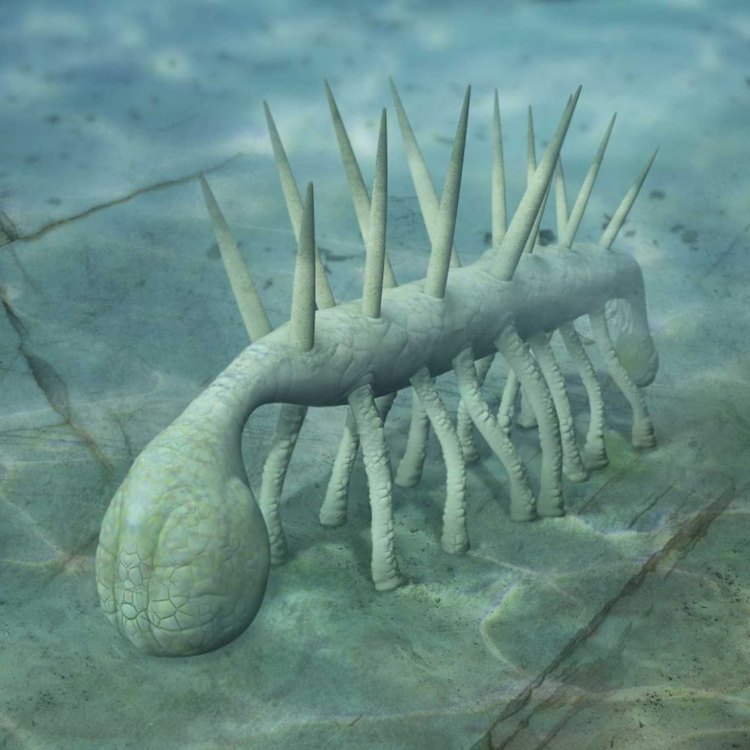
Hallucigenia
- Adult Size: Small
- Average Lifespan: Unknown
- Reproduction: Sexual
- Reproductive Behavior: Unknown
- Sound or Call: None
- Migration Pattern: Unknown
- Social Groups: Unknown
- Behavior: Unknown
- Threats: Fossil species
- Conservation Status: Extinct
- Impact on Ecosystem: Unknown
- Human Use: None
- Distinctive Features: Spines on the back
- Interesting Facts: Hallucigenia is an extinct animal that lived in the Burgess Shale in Canada during the Cambrian period. It was a small marine creature with a long and slender body. One of the most distinctive features of Hallucigenia is the presence of spines on its back. Its feeding method is believed to be carnivorous, although the exact details are unknown. The average lifespan of Hallucigenia is not known, as it is a fossil species. It reproduced sexually, but its reproductive behavior is also unknown. Hallucigenia had no known predators and its impact on the ecosystem is uncertain. It is classified under the Kingdom Animalia, Phylum Onychophora, Class Incertae sedis, Order Hallucigeniidae, and Family Hallucigeniinae. Unfortunately, Hallucigenia is now extinct and is considered a fossil species.
- Predator: None
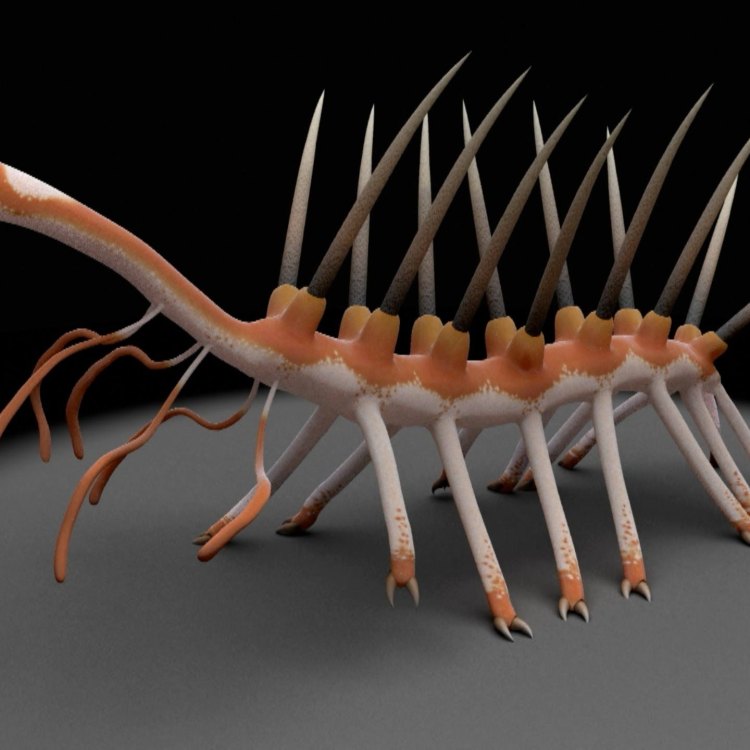
Hallucigenia
The Mysterious Hallucigenia: A Small Creature with Big Mysteries
Deep in the Burgess Shale in Canada, 508 million years ago during the Cambrian period, a small and elusive creature lived. Meet Hallucigenia - an extinct animal with a puzzling appearance and unknown behavior. Despite its curious features, Hallucigenia has remained a mystery to paleontologists and scientists, leaving us with more questions than answers. In this article, we will delve into the unique features and intriguing facts about this fascinating creature PeaceOfAnimals.Com.The Basics: Adult Size, Average Lifespan, and Reproduction
Hallucigenia was a relatively small creature, measuring only a few centimeters in length. Its exact adult size is unknown, but paleontologists estimate it to be around 5 centimeters. This would make Hallucigenia comparable in size to a modern-day cockroach. However, its slender and elongated body with 8 pairs of legs and 7 pairs of spines on its back made it stand out from other creatures.The average lifespan of Hallucigenia is currently unknown, as it is an extinct species. However, its fossils suggest that it lived for a significant period, possibly several years. This means that Hallucigenia was able to adapt and survive in its environment, making it a successful creature in its time.
Reproduction in Hallucigenia was sexual, but little is known about its reproductive behavior. Its fossils do not provide any evidence of eggs, larvae, or young, leaving scientists with no clue as to how it reproduced Horned Grebe. This adds to the intrigue and mystery surrounding this creature.
The Elusive Behavior: Sound or Call, Migration Pattern, and Social Groups
One of the most baffling aspects of Hallucigenia is its behavior. There is no evidence of sound or call, meaning that Hallucigenia did not communicate through vocalizations. As it lived in the ocean, it is possible that it communicated through chemical signals or body movements, similar to modern-day sea creatures.The migration pattern of Hallucigenia is also unknown. It is unclear if it had a regular migration route or if it stayed in the same area throughout its life. This leaves scientists to speculate on the possible reasons for its movement, such as mating, food availability, or environmental factors.
Due to the scarcity of its fossils, it is difficult to determine if Hallucigenia lived in social groups or was a solitary creature. However, based on its body structure and possible defensive mechanisms, it is likely that it lived and moved in groups, similar to modern-day insects.
Distinctive Features: Spines on the Back
One of the most distinguishing features of Hallucigenia is the presence of spines on its back. These spines, also known as tubercles, were arranged in 7 pairs along its body, with one pair on each body segment. The function of these spines is still a mystery, although there are a few theories.Some scientists believe that the spines were used for protection against predators, acting as a deterrent or a defense mechanism. Others propose that the spines were used for sensory purposes, helping Hallucigenia to navigate and sense its environment. However, the exact purpose of these spines is yet to be confirmed.
Fun Facts and Impact on Ecosystem
Hallucigenia is not only shrouded in mystery but also holds some interesting facts. For instance, its name comes from the Greek word "hallo" meaning "dream" and "genia" meaning "creation." This is because its bizarre and otherworldly appearance was thought to have been imagined or hallucinated by early paleontologists.As a fossil species, Hallucigenia had no known predators. This suggests that it must have had some efficient survival strategies, such as camouflage or fast movement, to escape predators. Additionally, its impact on the ecosystem is uncertain, as its feeding and behavior are not well-understood. However, as a carnivorous creature, it may have played a role in controlling the population of smaller creatures in its environment.
Classification and Conservation Status
Based on its physical characteristics and fossil remains, Hallucigenia is classified under the Kingdom Animalia, Phylum Onychophora, Class Incertae sedis, Order Hallucigeniidae, and Family Hallucigeniinae. However, its exact placement in the taxonomic hierarchy is still debated among scientists.Unfortunately, Hallucigenia is now extinct and is considered a fossil species, with no living descendants. Its fossils were discovered in a fossil-rich site called the Burgess Shale, making it one of the most significant regions for understanding Cambrian life. Although extinct, Hallucigenia continues to teach us about the mysteries of evolution and the incredible diversity of life on Earth.
In Conclusion
Hallucigenia remains an enigma to scientists, with its peculiar features and uncertain behavior. Its fossils continue to inspire new research, giving us a glimpse into the diverse and strange world of ancient creatures. Although we may never fully understand the mysteries surrounding Hallucigenia, its existence serves as a reminder of the ever-evolving and fascinating history of life on Earth.
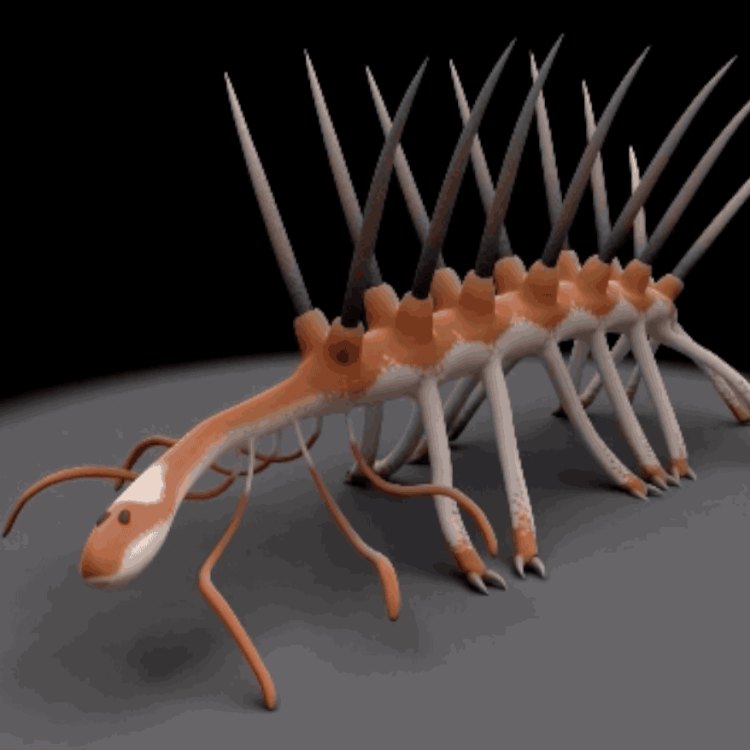
The Mysterious Hallucigenia: An Enigmatic Creature from the Depths of Burgess Shale
Disclaimer: The content provided is for informational purposes only. We cannot guarantee the accuracy of the information on this page 100%. All information provided here may change without prior notice.




